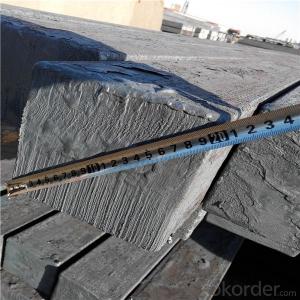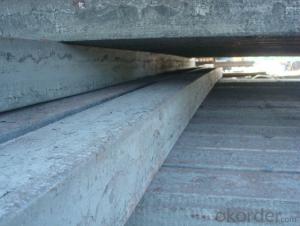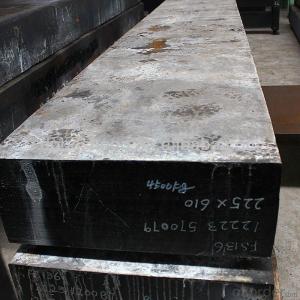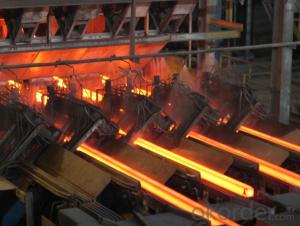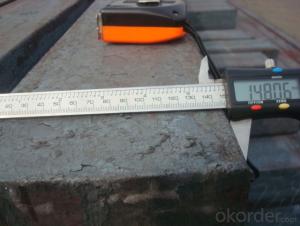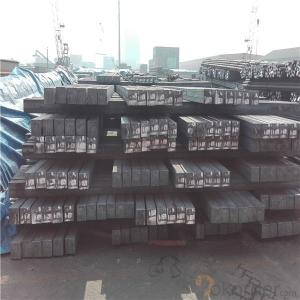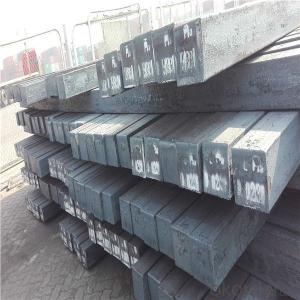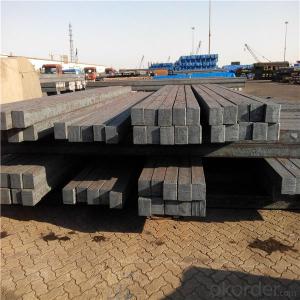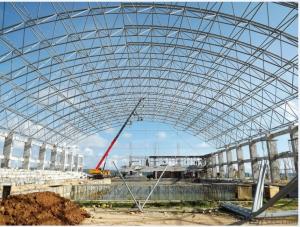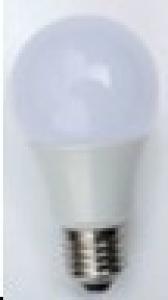Mild steel billet price low but high quality
- Loading Port:
- Tianjin
- Payment Terms:
- TT OR LC
- Min Order Qty:
- 1000 m.t.
- Supply Capability:
- 16532 m.t./month
OKorder Service Pledge
OKorder Financial Service
You Might Also Like
Specification
Steel billet(ingot) by cogging or breakdown of semi-finished products, is the raw material of all kinds of steel mill. Billet section of square, round, flat, rectangular
and abnormity of several kinds of, mainly related to the shape of rolled products.
The billet is mainly divided into two kinds from the shape:
Slab: cross section width and height of the ratio of the larger, mainly used for rolling plate.
Size :100mm to 165mm
Length:6~12meters
Grade: Q195/Q215/Q235/Q275
Qaulity:own factory, stable quality
Tolerance: Strictly according to the G/B and JIS standard
Gade:
Standard | C(%) | Mn(%) | S(%) | P(%) | Si(%) |
Q195 | ≤0.12 | ≤0.50 | ≤0.040 | ≤0.035 | ≤0.30 |
Q235 | ≤0.20 | ≤1.40 | ≤0.045 | ≤0.045 | ≤0.35 |
Q275 | ≤0.22 | ≤1.50 | ≤0.045 | ≤0.045 | ≤0.35 |
20MnSi | 0.17-0.25 | 1.2-1.6 | ≤ 0.050 | ≤ 0.050 | 0.40-0.80 |
3SP | 0.14-0.22 | 0.40-0.85 | ≤ 0.050 | ≤ 0.040 | 0.05-0.15 |
5SP | 0.28-0.37 | 0.50-1.00 | ≤ 0.050 | ≤ 0.040 | 0.15-0.30 |
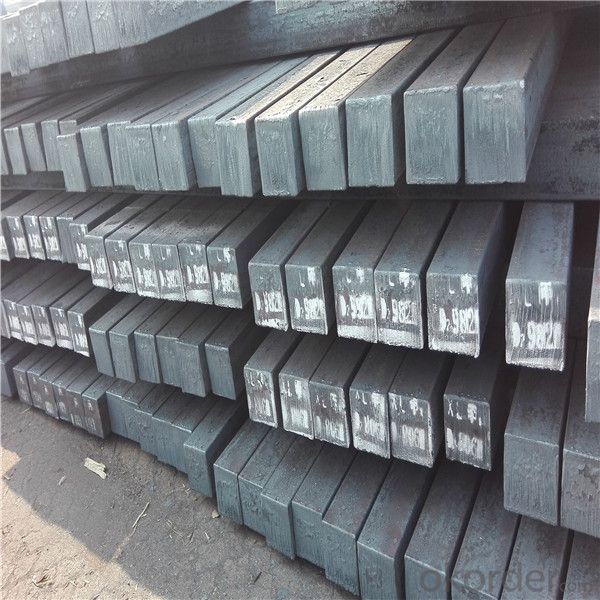
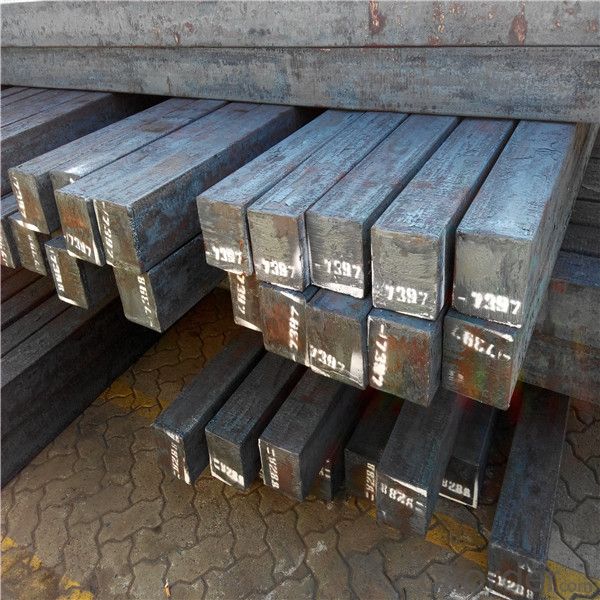
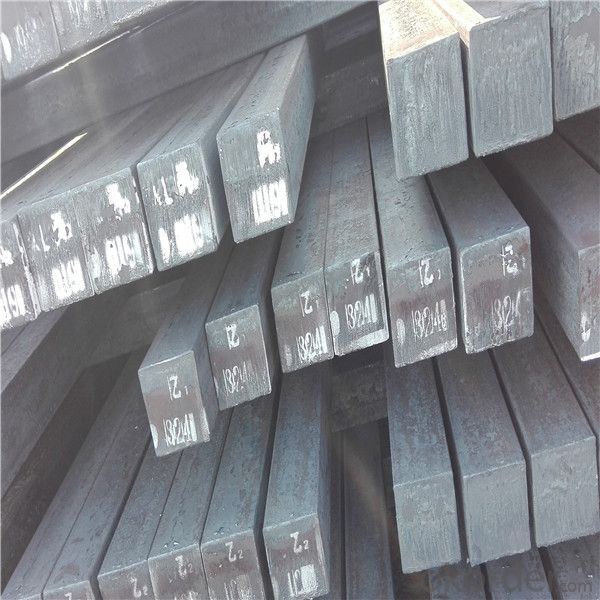
Our service :
We have a plant and professional team to provide our best service, from the start of production until the
loading into the vessel, we have a complete quality follow up procedure, to assure our products arrives to the customer with satisfaction. Welcome new and old customers
to contact us for future business relationships! We will give you a surpise price.
Packing :
Within 30 days
1.Standard export package
2.In bundles with steel strips
3.As the requirements of the customers
FAQ:
Q: What is payment terms?
A: FOB 30% T/T IN ADVANCE AS DEPOSIT AND 70% T/T BEFORE SHIPMENT
CIF and CFR 30% T/T IN ADVANCE AS DEPOSIT AND 70% T/T AS THE COPY OF B/L OR L/C AT SIGHT
Q:How to guarantee the quality of the products?
A:We have established the international advanced quality management system,every link from raw material
to final product we have strict quality test;We resolutely put an end to unqualified products flowing into the market.
At the same time, we will provide necessary follow-up service assurance.
Q:How long can we receive the product after purchase?
A :In the purchase of product within three working days, We will arrange the factory delivery as soon as possible.
The pecific time of receiving is related to the state and position of customers.
- Q: What is the standard tolerance for steel billet dimensions?
- The standard tolerance for steel billet dimensions can vary depending on the specific industry and application. However, commonly accepted tolerances for steel billet dimensions typically range from +/- 0.5% to +/- 2% of the specified dimensions.
- Q: What are the different types of cutting processes used for shaping steel billets?
- There are several different types of cutting processes used for shaping steel billets, including sawing, shearing, and flame cutting. Sawing involves using a saw blade to cut through the billet, while shearing uses a machine with two blades to cut the billet in a straight line. Flame cutting, on the other hand, involves using a high-temperature flame to melt and cut through the steel. Each process has its own advantages and is chosen based on factors such as the desired accuracy, speed, and cost-effectiveness of the cutting operation.
- Q: How are steel billets recycled at the end of their lifespan?
- Steel billets, when they reach the end of their lifespan, undergo a process called steel scrap recycling. This process involves the collection and segregation of the billets from other materials. Subsequently, the billets are cleaned to eliminate contaminants and sorted based on their composition and quality. The subsequent step in the recycling process encompasses melting the steel billets in a furnace. The high temperatures in the furnace cause the steel to melt, effectively separating it from any impurities. Various techniques, such as electric arc furnaces or basic oxygen furnaces, can be employed for this purpose. Upon melting, the steel is then cast into either new billets or other steel products, depending on the desired end product, such as bars, rods, or sheets. The molten steel is poured into molds to acquire the desired shape and subsequently cooled down to solidify. Following solidification, the newly formed steel billets undergo further processing to eliminate any surface imperfections and achieve the desired dimensions. Processes like hot rolling, cold rolling, or heat treatment may be employed to enhance the mechanical properties of the steel. The recycled steel billets find applications across various industries, including construction, automotive, and manufacturing, to manufacture a diverse range of products. By recycling steel billets, the material's lifespan is extended, thereby reducing the necessity for virgin steel production and conserving valuable natural resources. Furthermore, recycling steel billets aids in diminishing energy consumption and greenhouse gas emissions associated with the production of new steel. In conclusion, the recycling process for steel billets at the end of their lifespan plays a crucial role in the circular economy, fostering sustainability and resource efficiency within the steel industry.
- Q: How are steel billets used in the manufacturing of mining components?
- Steel billets are a vital raw material used in the production of mining components. These semi-finished steel products act as the initial stage in creating various mining equipment and parts. To begin with, steel billets are heated and then processed through rolling mills to acquire the desired shape, such as bars, rods, or sheets. These specialized forms are then further processed and fabricated to manufacture specific mining components, including pipes, tubes, plates, and beams. Mining components crafted from steel billets offer numerous advantages. The strength, durability, and excellent mechanical properties of steel make it an optimal material for mining equipment exposed to harsh conditions, heavy loads, and extreme temperatures. Steel components can endure the demanding environments found in the mining industry, ensuring their longevity and reliability. Moreover, steel billets can be easily machined, welded, and formed, allowing for the customization of mining components to meet specific requirements. The versatility of steel allows for the production of components with intricate shapes and designs, ensuring their effective performance within mining operations. Furthermore, steel billets can be alloyed with other metals to further enhance their properties. For example, alloying steel with elements like chromium, nickel, or molybdenum can improve corrosion resistance, hardness, and wear resistance, making these components more suitable for mining applications. Overall, steel billets play a crucial role in the manufacturing of mining components by providing a robust and flexible material capable of withstanding the demanding conditions of the mining industry. Their ability to be shaped, customized, and alloyed allows for the production of high-quality and dependable mining equipment and parts that are essential for efficient and safe mining operations.
- Q: What is the typical density of a steel billet?
- The typical density of a steel billet depends on the specific type of steel being used. However, in general, the density of a steel billet ranges from 7.75 to 8.05 grams per cubic centimeter (g/cm³). This density can vary slightly depending on the composition and quality of the steel. It is important to note that the density of a steel billet can also be affected by any impurities or contaminants present in the material.
- Q: What are the different forming processes used for steel billets?
- There are various methods for forming steel billets, each possessing unique advantages and applications. These methods encompass: 1. Casting: This process involves the pouring of molten steel into a mold for solidification. It is commonly employed for large-scale steel billet production, as it allows for the creation of intricate shapes and sizes. However, casting may result in surface defects and necessitate additional finishing procedures. 2. Extrusion: The extrusion process entails the forceful passage of a steel billet through a die to achieve a desired shape. It is frequently used to fabricate long, uniform sections like bars, rods, and tubes. Extrusion ensures high precision and superior surface finish, rendering it suitable for applications where dimensional accuracy is crucial. 3. Rolling: Rolling is a widely utilized method for shaping steel billets. It involves passing the billet through a set of rollers to decrease its cross-sectional area and increase its length. Rolling can be carried out at high or low temperatures, depending on the desired properties of the final product. This versatile and cost-effective process can produce an extensive range of shapes, including flats, rounds, and squares. 4. Forging: Forging is a technique in which a steel billet is heated and shaped through compressive forces. This process is renowned for generating robust, durable components with exceptional mechanical properties. Forging can be executed via various methods such as open-die forging, closed-die forging, and press forging. It is commonly employed for manufacturing high-strength parts like gears, crankshafts, and connecting rods. 5. Swaging: Swaging is a process that involves reducing the diameter of a steel billet by forcefully pushing it through a series of dies. It is frequently employed for shaping tubular sections such as pipes and tubes. Swaging guarantees high accuracy and tight tolerances, making it suitable for applications that require precise fitting or specific diameters. 6. Drawing: Drawing is a process in which a steel billet is pulled through a die to decrease its cross-sectional area while increasing its length. It is commonly used for producing wires, cables, and thin tubes. Drawing ensures excellent surface finish and dimensional accuracy, making it suitable for applications that demand fine wire or precise tubing. Each of these forming processes possesses distinct advantages and is chosen based on the specific requirements of the application at hand.
- Q: How are steel billets used in the manufacturing of machinery?
- Steel billets are an essential component in the manufacturing of machinery due to their versatility and strength. These cylindrical metal bars, typically made from carbon or alloy steel, serve as the raw material that is transformed into various machine parts and components. One common application of steel billets in machinery manufacturing is for the production of machine frames and structures. The billets are heated and then hot-rolled or forged into the desired shape, ensuring the final product has the necessary strength and durability to withstand the mechanical stresses it will encounter during operation. Additionally, steel billets are used to create machine components such as gears, shafts, and axles. These parts require high tensile strength and resistance to wear and deformation, making steel billets the ideal material choice. The billets are typically machined or forged into the desired shape, ensuring precise dimensions and tolerances are met. Furthermore, steel billets can also be used in the manufacturing of machine tools, which are crucial for shaping and machining various materials. By using steel billets as the base material, machine tools can effectively handle heavy loads, provide stability, and ensure precision in the manufacturing processes. In summary, steel billets are integral to the manufacturing of machinery, as they provide the necessary strength, durability, and versatility required for the production of machine frames, components, and tools. Their ability to be shaped, machined, and forged into various forms allows for the creation of high-quality machinery that can effectively perform its intended functions.
- Q: Can steel billets be used in the production of consumer electronics?
- No, steel billets are not typically used in the production of consumer electronics. Steel billets are semi-finished steel products that are typically used as raw material in the manufacturing of other steel products, such as bars, rods, and pipes. Consumer electronics, on the other hand, are typically made using a variety of materials, including plastics, metals like aluminum and copper, and electronic components such as circuit boards and semiconductors. While steel may be used in some components of consumer electronics, such as the casing or frame, it is usually in a more processed form, such as sheet metal or extruded profiles, rather than steel billets.
- Q: Can steel billets be used in the production of sculptures and artwork?
- Sculptures and artwork can indeed utilize steel billets. Steel, being a versatile and malleable material, empowers artists to fashion one-of-a-kind and intricate designs. The inclusion of steel billets in sculptures and artwork guarantees sturdiness, resilience, and the potential for expansive installations. Artists can skillfully mold, fuse, and manipulate steel billets to generate an extensive array of sculptures, ranging from abstract shapes to figurative representations. The utilization of steel also contributes a contemporary and audacious touch to the artwork, thanks to its industrial aesthetic. Moreover, artists can opt to employ diverse techniques such as painting, patina, or polishing to further enrich their creative vision. In summary, steel billets present an exhilarating prospect for artists to delve into and stretch the boundaries of their artistic expression.
- Q: How do steel billets contribute to the manufacturing of agricultural equipment?
- Steel billets are a crucial component in the manufacturing of agricultural equipment due to their versatility and durability. These billets, which are essentially semi-finished steel products, serve as the foundation for various agricultural machinery and equipment. Firstly, steel billets are used to create the main structural components of agricultural equipment such as tractors, harvesters, plows, and tillers. These components, such as the chassis, frame, and axles, require a strong and sturdy material to withstand the heavy loads and harsh conditions encountered in agricultural operations. Steel billets provide the necessary strength and resilience to ensure the equipment can withstand the rigors of farming. In addition to the structural components, steel billets are also used to manufacture smaller parts and mechanisms that are integral to the functioning of agricultural machinery. For example, gears, sprockets, shafts, and bearings are commonly made from steel billets. These parts are essential for transmitting power and facilitating the smooth operation of various agricultural equipment. Moreover, steel billets contribute to the longevity and reliability of agricultural equipment. The high strength and durability of steel ensure that the machinery can withstand the demanding agricultural environment, including exposure to moisture, dirt, and extreme temperatures. This durability reduces maintenance requirements and extends the lifespan of the equipment, resulting in cost savings for farmers. Furthermore, steel billets can be easily shaped and molded into complex designs, allowing manufacturers to create customized agricultural equipment tailored to specific farming needs. This flexibility in design enables the production of specialized machinery for various agricultural operations, such as planting, harvesting, irrigation, and livestock management. Overall, steel billets play a vital role in the manufacturing of agricultural equipment by providing the necessary strength, durability, and versatility required for the demanding conditions of modern farming. Their contribution ensures that farmers have access to reliable and efficient machinery, ultimately increasing productivity and supporting sustainable agricultural practices.
Send your message to us
Mild steel billet price low but high quality
- Loading Port:
- Tianjin
- Payment Terms:
- TT OR LC
- Min Order Qty:
- 1000 m.t.
- Supply Capability:
- 16532 m.t./month
OKorder Service Pledge
OKorder Financial Service
Similar products
Hot products
Hot Searches
Related keywords

